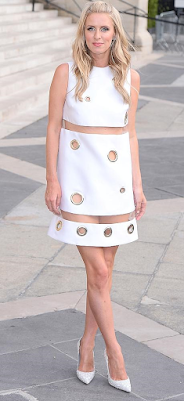Redact (pronounced ri-dakt)
(1) In publishing, to put into suitable literary form; revise; edit (professional technical use only).
(2) To draw up or frame a statement, proclamation etc (rare, mostly in historic references).
(3) To hide or remove (confidential parts of a text) before publication or distribution, or to examine (a text) for this purpose.
(4) To bring together in one unit; to combine or bring together into one; to bring an area of study within the comprehension capacity of a person; To reduce to a particular condition or state, especially one that is undesirable; to reduce something physical to a certain form, especially by destruction (all of which became obsolete between the sixteenth & eighteenth centuries).
1350–1400: From the Middle English, from the Old French redacter from the Latin redāctus (past participle of redigere (to lead back)), the construct being red- (from metanalysis of re- in verbs) + āctus (past participle of agere (to lead; to drive)) and perfect passive participle of redigō (drive, lead, collect, reduce), that construct being re- (back) + agō (put in motion, drive). Redact is a verb, redaction & redactor are nouns and redactional is an adjective; the common noun plural is redactions. One curious convention of use is that the verb unredact means "to remove a redaction and restore the original content" while when used as an the adjective "unredacted" can either describe such a document or one which had never had any redactions.
An example of a redacted document with the "plain black block" method using the redaction tool in Adobe Acrobat DC.
Lindsay Lohan's conquest list, 2013, partially redacted.
Traditional forms of redaction were as simple as crossing-out with a black pen or smudging entries to the point of illegibility and these methods can be emulated by the software tools but software houses caution that if undertaken in the simpler image editors, it is sometimes possible to reverse engineer the process of "smudging" or "swirling", making things appear in their original form. In 2014, In Touch magazine published a partially redacted list of three-dozen names compiled by Lindsay Lohan. Written in a Beverley Hills hotel room in 2013, the 36 names were those said to be Ms Lohan's "conquests" although it wasn't clear if the list was selective or exhaustive and it produced reactions among those mentioned ranging from "no comment" to a Clintonesque "I did not have sex with that woman". Points of interest included Ms Lohan's apparently intact short & long-term memory and her commendably neat handwriting. She seems to favor the "first letter bigger" style in which the style is "all capitals" but the first letter (in each word in the case of proper nouns such as names) is larger. In typography, the idea is derived from the "drop cap", a centuries-old tradition in publishing where the opening letter of a sentence is many times the size of the rest, the text wrapping around the big letter. In many cases, a drop cap was an elaborate or stylized version of the letter.














































































